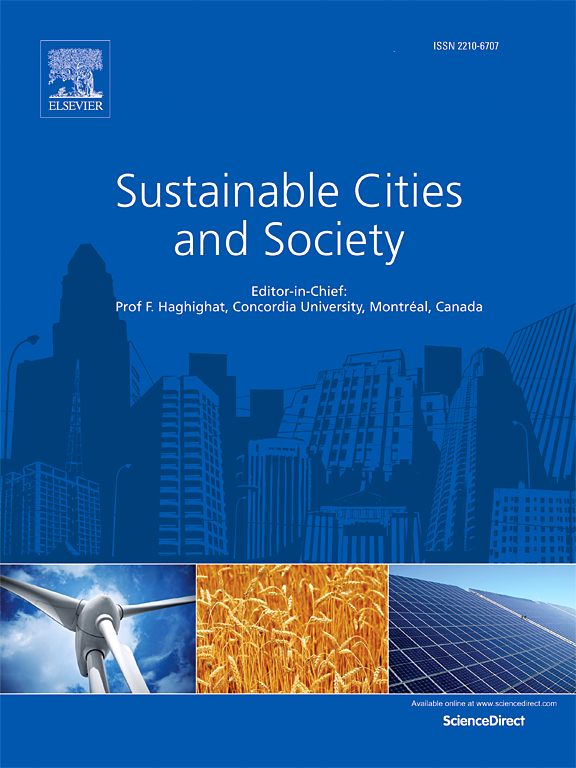Analysis of the coordinated development and influencing factors between urban population and environment: A case study of 35 metropolises in China
IF 10.5
1区 工程技术
Q1 CONSTRUCTION & BUILDING TECHNOLOGY
引用次数: 0
Abstract
Balancing the relationship between population and environment is crucial for urban sustainability nowadays. Research on the coordinated development of population and environment from the perspective of city size is relatively scarce. This study constructed a comprehensive evaluation system for demographic and environmental systems. It applied a relative development index, a modified coupling coordination degree (CCD) model, an obstacle degree model, and a two-way fixed effects model to explore the development trends, coupling coordination relationships and influencing factors of the Population-Environment (P-E) complex system in 35 metropolitan cities in China from 2006 to 2022. The results indicated that (1) the development levels of population and environment had generally improved, and there were significant disparities in the population development level among cities of different sizes; (2) population development lagged behind environmental development, though they became gradually synchronized; (3) the CCD of P-E complex system increased with city sizes; (4) major factors influencing P-E coordination included population reproduction, environmental investments, aging and migration. Larger-scale cities like megacities should prioritize to mitigate population aging, narrow urban-rural income gap, strengthen pollution control, and balance gender structure. Smaller-scale cities can focus on optimizing industrial and employment structures. These findings provided suggestions to promote urban coordinated, high-quality and sustainable development.
城市人口与环境协调发展及影响因素分析:中国 35 个大都市案例研究
本文章由计算机程序翻译,如有差异,请以英文原文为准。
求助全文
约1分钟内获得全文
求助全文
来源期刊

Sustainable Cities and Society
Social Sciences-Geography, Planning and Development
CiteScore
22.00
自引率
13.70%
发文量
810
审稿时长
27 days
期刊介绍:
Sustainable Cities and Society (SCS) is an international journal that focuses on fundamental and applied research to promote environmentally sustainable and socially resilient cities. The journal welcomes cross-cutting, multi-disciplinary research in various areas, including:
1. Smart cities and resilient environments;
2. Alternative/clean energy sources, energy distribution, distributed energy generation, and energy demand reduction/management;
3. Monitoring and improving air quality in built environment and cities (e.g., healthy built environment and air quality management);
4. Energy efficient, low/zero carbon, and green buildings/communities;
5. Climate change mitigation and adaptation in urban environments;
6. Green infrastructure and BMPs;
7. Environmental Footprint accounting and management;
8. Urban agriculture and forestry;
9. ICT, smart grid and intelligent infrastructure;
10. Urban design/planning, regulations, legislation, certification, economics, and policy;
11. Social aspects, impacts and resiliency of cities;
12. Behavior monitoring, analysis and change within urban communities;
13. Health monitoring and improvement;
14. Nexus issues related to sustainable cities and societies;
15. Smart city governance;
16. Decision Support Systems for trade-off and uncertainty analysis for improved management of cities and society;
17. Big data, machine learning, and artificial intelligence applications and case studies;
18. Critical infrastructure protection, including security, privacy, forensics, and reliability issues of cyber-physical systems.
19. Water footprint reduction and urban water distribution, harvesting, treatment, reuse and management;
20. Waste reduction and recycling;
21. Wastewater collection, treatment and recycling;
22. Smart, clean and healthy transportation systems and infrastructure;
 求助内容:
求助内容: 应助结果提醒方式:
应助结果提醒方式:


